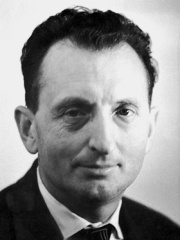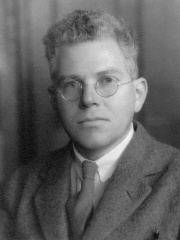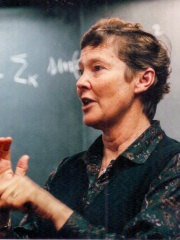



The Most Famous
PHYSICISTS from Australia
This page contains a list of the greatest Australian Physicists. The pantheon dataset contains 851 Physicists, 4 of which were born in Australia. This makes Australia the birth place of the 26th most number of Physicists behind Israel, and South Africa.
Top 4
The following people are considered by Pantheon to be the most legendary Australian Physicists of all time. This list of famous Australian Physicists is sorted by HPI (Historical Popularity Index), a metric that aggregates information on a biography's online popularity.

1. Lawrence Bragg (1890 - 1971)
With an HPI of 82.07, Lawrence Bragg is the most famous Australian Physicist. His biography has been translated into 87 different languages on wikipedia.
Sir William Lawrence Bragg (31 March 1890 – 1 July 1971) was a British physicist who shared the 1915 Nobel Prize in Physics with his father, William Henry Bragg, "for their services in the analysis of crystal structure by means of X-rays", an important step in the development of X-ray crystallography. As of 2025, Bragg is the youngest ever Nobel laureate in physics, or in any science category, having received the award at the age of 25. Bragg was the director of the Cavendish Laboratory, Cambridge, when James D. Watson and Francis Crick reported the discovery of the structure of DNA in February 1953.

2. Alexander Prokhorov (1916 - 2002)
With an HPI of 70.80, Alexander Prokhorov is the 2nd most famous Australian Physicist. His biography has been translated into 76 different languages.
Alexander Mikhailovich Prokhorov (born Alexander Michael Prochoroff, Russian: Алекса́ндр Миха́йлович Про́хоров; 11 July 1916 – 8 January 2002) was an Australian-born Soviet-Russian physicist and researcher whose work focused on quantum electronics. His most famous and well-known works were on optics and electromagnetic research. He was jointly awarded the Nobel Prize in Physics in 1964 with Charles Hard Townes and Nikolay Basov for his fundamental work that led to the development of the laser and the maser.

3. Mark Oliphant (1901 - 2000)
With an HPI of 58.02, Mark Oliphant is the 3rd most famous Australian Physicist. His biography has been translated into 28 different languages.
Sir Marcus Laurence Elwin Oliphant, commonly known as Mark Oliphant (8 October 1901 – 14 July 2000), was an Australian physicist and humanitarian who played an important role in the first experimental demonstration of nuclear fusion and in the development of nuclear weapons. Born and raised in Adelaide, South Australia, Oliphant graduated from the University of Adelaide in 1922. He was awarded an 1851 Exhibition Scholarship in 1927 on the strength of the research he had done on mercury, and went to England where he studied under Sir Ernest Rutherford at the University of Cambridge's Cavendish Laboratory. There, he discovered the respective nuclei of helium-3 (helions) and of tritium (tritons). He also discovered that when they reacted with each other, the particles that were released had far more energy than they started with. Energy had been liberated from inside the nucleus, and he realised that this was a result of nuclear fusion. Oliphant left the Cavendish Laboratory in 1937 to become the Poynting Professor of Physics at the University of Birmingham. He attempted to build a 60-inch (150 cm) cyclotron at the university, but its completion was postponed by the outbreak of the Second World War in Europe in 1939. He became involved with the development of radar, heading a group at the University of Birmingham that included John Randall and Harry Boot. They created a radical new design, the cavity magnetron, that made microwave radar possible. Oliphant also formed part of the MAUD Committee, which reported in July 1941, that an atomic bomb was not only feasible, but might be produced as early as 1943. Oliphant was instrumental in spreading the word of this finding in the United States, thereby starting what became the Manhattan Project. Later in the war, he worked on it with his friend Ernest Lawrence at the Radiation Laboratory in Berkeley, California, developing electromagnetic isotope separation, which provided the fissile component of the Little Boy atomic bomb used in the atomic bombing of Hiroshima in August 1945. After the war, Oliphant returned to Australia as the first director of the Research School of Physical Sciences and Engineering at the new Australian National University (ANU), where he initiated the design and construction of the world's largest (500 megajoule) homopolar generator. He retired in 1967, but was appointed Governor of South Australia on the advice of the premier, Don Dunstan. He became the first South Australian-born governor of South Australia. He assisted in the founding of the Australian Democrats political party and was chairman of the meeting in Melbourne in 1977 at which the party was launched. Late in life he witnessed his wife, Rosa, suffer before her death in 1987, and he became an advocate for voluntary euthanasia. He died in Canberra in 2000.

4. Helen Quinn (b. 1943)
With an HPI of 55.94, Helen Quinn is the 4th most famous Australian Physicist. Her biography has been translated into 23 different languages.
Helen Rhoda Arnold Quinn (born 19 May 1943) is an Australian-born particle physicist and educator who has made major contributions to both fields. Her contributions to theoretical physics include the Peccei–Quinn theory which implies a corresponding symmetry of nature(related to matter-antimatter symmetry and the possible source of the dark matter that pervades the universe) and contributions to the search for a unified theory for the three types of particle interactions (strong, electromagnetic, and weak). As Chair of the Board on Science Education of the National Academy of Sciences, Quinn led the effort that produced A Framework for K-12 Science Education: Practices, Crosscutting Concepts, and Core Ideas—the basis for the Next Generation Science Standards adopted by many states. Her honours include the Dirac Medal of the International Center for Theoretical Physics, the Oskar Klein Medal from the Royal Swedish Academy of Sciences, appointment as an Honorary Officer of the Order of Australia, the J. J. Sakurai Prize for Theoretical Particle Physics from the American Physical Society, the Karl Taylor Compton Medal for Leadership in Physics from the American Institute of Physics, the 2018 Benjamin Franklin Medal in Physics from the Franklin Institute, and the 2023 Harvey Prize from Technion -- Israel Institute of Technology.
People
Pantheon has 4 people classified as Australian physicists born between 1890 and 1943. Of these 4, 1 (25.00%) of them are still alive today. The most famous living Australian physicists include Helen Quinn. The most famous deceased Australian physicists include Lawrence Bragg, Alexander Prokhorov, and Mark Oliphant.
Living Australian Physicists
Go to all RankingsDeceased Australian Physicists
Go to all RankingsLawrence Bragg
1890 - 1971
HPI: 82.07
Alexander Prokhorov
1916 - 2002
HPI: 70.80
Mark Oliphant
1901 - 2000
HPI: 58.02
Overlapping Lives
Which Physicists were alive at the same time? This visualization shows the lifespans of the 3 most globally memorable Physicists since 1700.

